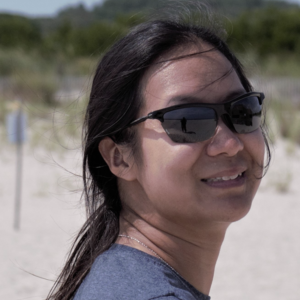
Learning self-defense skills is important. If you’re here, you probably already know that self-defense isn’t all about mindset and that it requires actually knowing how to do certain things. They may be “hard” skills like hands-on fighting, delivering pepper spray into the eyes of a bad guy, or shooting a gun. They may be “soft” skills, like spotting incoming danger in time to avoid it or deescalating a potentially violent situation. Either way, relying on instinctual responses can’t be counted on to put the odds in our favor if an attacker comes after us. While we might be successful without the skills, we’re much more likely to prevail with them, especially if we also have the corresponding tools with us.
The problem is that learning skills is not a one-and-done kind of event. Unlike video game characters, we can’t just absorb them once and expect to master them. Taking a single class is good for familiarization and we might even learn to perform the skill reasonably well while we’re there. It gets a little foggier as we get further away from that class though, especially if we don’t practice – and practice can be difficult if we don’t precisely remember what we’re supposed to do or if we don’t have a training partner who also understands the material. Taking a series of classes over a period of time, or repeating that single class on a regular basis, helps with both longer-term retention and refinement of the skills so that you are able to perform them less awkwardly and practice them more effectively afterwards.
How do you know when you’ve learned a skill well enough to apply it when needed, though? It’s not just a matter of learning it over and over again, or even of practicing it over and over again. You have to know where you stand with your ability to use it on demand, under pressure. Being able to perform when you’re all warmed up and have just reviewed what you’re supposed to do with an instructor is a good start and necessary before you can get better at the skill. However, bad guys won’t wait for you to be ready. The good news is that even a minimum level of skill is better than none at all, so you shouldn’t feel hopeless because you aren’t an expert yet. Mastery is simply stacking the deck further in your favor, and going beyond a certain level is largely an exercise in feeding an interest. The trick is figuring out when you have reached that minimum, and when you have passed the sweet spot into studying for the sake of studying.
Some skills can be objectively assessed. You can shoot standard courses of fire that allow you to count up a score in various ways, for instance. An instructor or a reliable source like pistol-training.com can help you find ones that can give you an idea of how your performance compares to various benchmarks, or you can shoot certain types of competitive matches. Writing down how you’re doing and revisiting the same test on an occasional basis can tell you if you’re maintaining your skills or if they’re degrading or improving over time. You can also measure how you’re doing when you’re “cold” and haven’t had any time to practice or warm up, versus how you’re doing after you’ve been at the range all day. The question remains on exactly what level you need to get to for that happy medium of skilled enough, but at least you can measure where you’re at.
Other skills need to be tested against another person, preferably one who wants to “win” the test over you. The ultimate test is, of course, if you have to face a bad guy for real. Since the consequences of waiting until then to find out if you have the necessary skills can be extremely negative as a result of nothing more than bad luck, it’s far better to use simulations. This is an area where combat sports like Brazilian jiu-jitsu, wrestling, and judo can really shine because the idea of competitive sparring is built in to those disciplines. The ability to survive and succeed in a training fight against an opponent who wants to do the same, at your expense though not your safety, is indicative of your ability to do the same against a less friendly attacker. You just need to be realistic about how the physical attributes, motivation, and skill level of your training partners compare to the bad guy you might face.
Finally, there are skills that can only be subjectively evaluated, including most soft skills. Some of them might need to be tested indirectly, such as by practicing your boundary-drawing in daily interactions and being introspective about your successes and failures then so that you can apply that skill in more high-consequence situations against someone who might want to physically attack you. You might need to show up at class or a similar setting so you can participate in exercises like the training evolutions that Craig Douglas and others in the Shivworks Collective put their students through. That’s because an outside observer and simulated scenarios might be necessary to tell if you’re able to perform on demand and under the kinds of stress that might occur in the real world.
As you get more advanced, you might want to mix your assessments, testing, and evaluation so that you are looking at multiple skills at once, adding a pre-test about which skill you should exercise at a particular moment in time. But however you do it, remember that you’re looking for gaps as opportunities and not failures. As you address those areas for improvement, you will know that you are becoming increasingly prepared to take care of your own safety. And not for nothing, knowing you can show up and simply do the thing that will keep you safe is a huge part of building the confidence that will tell the world that there is no victim here.




